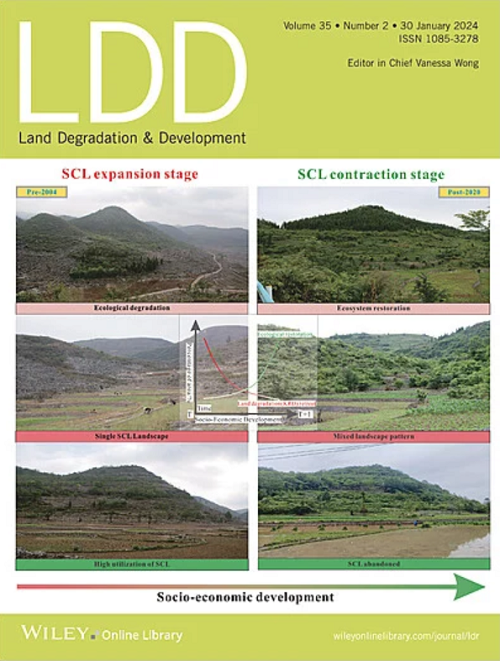Quantitative Characterization of Mining‐Induced Disturbed Aeolian Sandy Soil—A Case Study of Daliuta Mining Area, China
IF 3.6
2区 农林科学
Q2 ENVIRONMENTAL SCIENCES
引用次数: 0
Abstract
Mining leads to soil degradation and land subsidence, resulting in decreased soil quality. However, there are limited studies on the detailed effects of mining activities on soil properties, particularly in western aeolian sand. This study, therefore, quantitatively assessed the aeolian sandy soil disturbance induced by mining activities in the contiguous regions of Shanxi, Shaanxi, and Inner Mongolia. The following soil physical quality indices were measured in the pre (May 2015), mid (October 2015), and postmining period (April 2016), such as the soil water content (SWC), particle size (PS), soil penetration (SP), and soil saturated hydraulic conductivity (SSHC). The results showed that mining activities brought irreversible effects on soil structures. In the pre‐mining period, land subsidence broke up large soil particles, destroying soil structure, leading to decreased PS (218.33 vs. 194.36 μm), SP (4615.56 vs. 2631.95 kPa), and subsequently decreased SSHC (1.12 vs. 0.99 cm/min). Rainfall during the midmining period exacerbated this fragmentation. Thereafter, low temperatures and humidity caused the soil to freeze, allowing the small soil particles to merge into larger ones. Meanwhile, the natural re‐sedimentation, subsidence, and heavy mechanical crushing in the post‐mining period increased PS and SP. The SSHC hence increased to 1.21 cm/min. Furthermore, the evaluation of soil indices from different stress zones showed that the external pulling stress zone always had a higher SSHC than the neutral zone in any mining period, possibly due to the presence of large cracks and high SWC. This study contributes to the understanding of the impact of mining activities on soil physical qualities, providing a theoretical basis and quantitative guidance for the surface damage caused by coal mining in the aeolian sandy area in Western China.求助全文
约1分钟内获得全文
求助全文
来源期刊

Land Degradation & Development
农林科学-环境科学
CiteScore
7.70
自引率
8.50%
发文量
379
审稿时长
5.5 months
期刊介绍:
Land Degradation & Development is an international journal which seeks to promote rational study of the recognition, monitoring, control and rehabilitation of degradation in terrestrial environments. The journal focuses on:
- what land degradation is;
- what causes land degradation;
- the impacts of land degradation
- the scale of land degradation;
- the history, current status or future trends of land degradation;
- avoidance, mitigation and control of land degradation;
- remedial actions to rehabilitate or restore degraded land;
- sustainable land management.
 求助内容:
求助内容: 应助结果提醒方式:
应助结果提醒方式:


